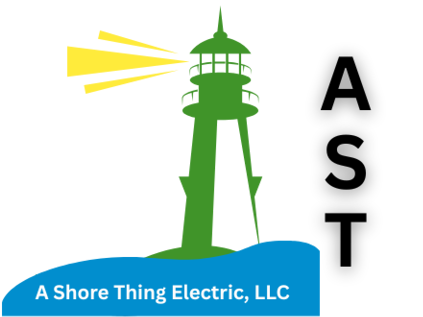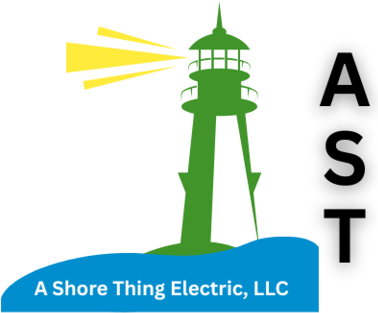What Homeowners Must Know Before Adding Outdoor Lighting
Installing outdoor lighting transforms your property's aesthetic appeal while enhancing your home's security and safety. Whether you're planning to add outdoor lighting to your Howell home or anywhere else, proper planning and electrical safety should be your top priorities. The process involves more than simply stringing up lights; it requires careful consideration of electrical systems, weather resistance, local regulations, and long-term maintenance requirements.
Smart homeowners understand that landscape lighting safety begins with thorough preparation and professional assessment. From understanding electrical load requirements to selecting weather-appropriate fixtures, every decision impacts both the functionality and longevity of your installation. Modern outdoor lighting systems can last decades when properly installed, but poor planning or shortcuts during installation often lead to expensive repairs, safety hazards, and complete system failures within just a few years.
This comprehensive guide covers everything from initial planning through final installation and ongoing maintenance, ensuring your outdoor lighting project succeeds safely and effectively. We'll explore essential safety protocols, advanced design considerations, installation methods, permit requirements, troubleshooting techniques, and maintenance schedules that protect both your investment and your family while maximizing the value and performance of your lighting system.
Key Takeaways
- Electrical safety outdoor lighting requires proper GFCI protection and weatherproof connections
- Professional assessment of your electrical panel capacity prevents overloading and fire hazards
- Local permits and inspections ensure code compliance and protect property values
- LED fixtures offer superior energy efficiency and longer lifespan for outdoor applications
- Proper wire burial depth per local codes and conduit selection prevent damage from weather and landscaping
- Regular maintenance schedules extend fixture life and maintain optimal performance
Understanding Your Electrical System Capacity
Before beginning any outdoor lighting installation, assess your home's electrical capacity thoroughly. Most residential panels can handle additional lighting loads, but older homes may require upgrades. Calculate the total wattage of your planned fixtures and consult an electrician to ensure your electrical panel has sufficient capacity available.
Key Electrical Assessment Areas
- Circuit Planning and Load Analysis: Outdoor circuits typically require proper breakers with GFCI protection as required by electrical codes. Calculate total fixture wattage and verify available panel capacity before installation.
- Existing Circuit Evaluation: If existing outdoor circuits serve pool pumps, hot tubs, or air conditioning units, dedicated circuits may be necessary. Overloaded circuits cause breaker trips, voltage drops, and potential fire hazards.
- Professional Load Calculations: Licensed electricians evaluate panel capacity, assess existing wiring condition, and determine service upgrade requirements. This prevents costly surprises and ensures safe operation.
- Future Expansion Planning: Consider adding outdoor speakers, water features, or security lighting later. Installing oversized circuits and conduits during initial construction provides valuable flexibility for
Essential Safety Requirements
| Safety Component | Requirements |
|---|---|
| GFCI Protection | Required for outdoor circuits as specified by local electrical codes |
| Wire Burial | Burial depths vary by local code requirements - consult local electrical codes for specific requirements |
| Fixture Ratings | Must be rated for wet locations per manufacturer specifications and local codes |
| Connections | Waterproof wire nuts or sealed junction boxes for all connections |
Landscape lighting safety depends on following these requirements without exception. Poor connections cause most outdoor lighting failures and create fire hazards. Always use components specifically rated for outdoor use, even in covered areas where moisture can accumulate.
Planning Your Lighting Design
Effective outdoor lighting design balances aesthetics, functionality, security, and energy efficiency through careful planning and fixture selection. Start by identifying key areas requiring illumination: pathways for safety, entrances for security and welcome, dark corners for crime prevention, and landscape features for aesthetic enhancement. Each area has different lighting requirements, fixture types, and installation considerations that affect both performance and costs.
When you add outdoor lighting to your Howell property or any location, consider the existing landscape, architectural features, and neighboring properties. Proper placement prevents glare while providing adequate illumination for intended purposes. Path lights should be spaced according to manufacturer recommendations for continuous coverage, while accent lights can be placed closer to highlight specific features like trees, sculptures, or architectural details.
Lighting zones help organize your design and control systems. Create separate zones for different areas: security lighting with motion sensors and bright illumination, decorative lighting with dimming capabilities, and pathway lighting with dusk-to-dawn controls. This zoning approach allows independent control of different lighting types, reducing energy consumption while maintaining functionality and convenience.
Consider seasonal changes and plant growth when planning fixture locations. Trees and shrubs grow over time, potentially blocking light paths or creating unwanted shadows. Winter snow loads can damage improperly supported fixtures, while summer heat affects transformer performance and bulb life. Plan for these changes during initial design to avoid costly relocations later.
Types of Outdoor Lighting Fixtures
- Path Lights: Low-voltage fixtures that illuminate walkways and driveways, typically 12-24 inches tall with downward-facing bulbs to minimize glare
- Spotlights: Directional fixtures for highlighting trees, architectural features, or security areas, available in various beam angles for different applications
- Flood Lights: Wide-beam fixtures for general area illumination, commonly used for security and work areas, available with motion sensors
- String Lights: Decorative lighting for patios and entertainment areas, available in LED options for energy efficiency and longevity
- In-Ground Lights: Recessed fixtures for uplighting trees or architectural features require proper drainage and heavy-duty construction
LED fixtures offer significant advantages for outdoor applications beyond simple energy savings. They consume substantially less energy than incandescent bulbs, last much longer, and produce less heat, which reduces both operating costs and maintenance requirements while providing consistent light output in various weather conditions. Modern LED fixtures maintain their brightness longer and offer better color rendering than older technologies.
Smart LED systems provide additional benefits through programmable controls, dimming capabilities, and color-changing options. These features allow seasonal adjustments, security programming, and entertainment lighting while maintaining energy efficiency. Integration with home automation systems enables remote control and scheduling, reducing energy consumption while enhancing convenience and security features.
Installation Methods and Best Practices
Professional outdoor lighting installation requires precise techniques and quality materials to ensure long-term performance and safety. Most installations use low-voltage systems (12V or 24V) for safety and energy efficiency, though line-voltage systems may be necessary for longer runs or high-wattage fixtures.
Critical Installation Components
- Underground Wiring and Trenching: Proper trenching follows precise depth requirements to prevent damage from gardening tools and freeze-thaw cycles. Use direct burial cable rated for wet locations with appropriate insulation ratings for your climate zone.
- Wire Selection and Sizing: Wire gauge depends on distance, load requirements, and voltage drop calculations. Include extra capacity for future additions and ensure adequate power reaches distant fixtures through proper sizing.
- Conduit Protection Systems: Schedule 40 PVC conduit provides superior protection in rocky soil and extreme weather. Install pull boxes at direction changes for maintenance access and future modifications.
- Transformer Placement: Position transformers near electrical panels with weather protection and adequate ventilation. Proper location ensures heat dissipation and long-term reliability of the electrical system.
- Grounding and Bonding: All metal fixtures and junction boxes require proper grounding through equipment grounding conductors. Low-voltage systems need grounding at transformer locations using approved methods.
Professional vs. DIY Installation
While simple fixture replacements or additions to existing low-voltage systems may be suitable for experienced DIY projects, new circuit installation and electrical panel connections require professional expertise and licensing. Licensed electricians understand local codes, permit requirements, safety protocols, and liability issues. They also carry comprehensive insurance protection and provide warranties on their work, protecting homeowners from potential problems.
DIY installation of low-voltage components may be possible after the transformer connection is completed by professionals, but the initial electrical connection to your home's panel must always be performed by qualified professionals. This ensures proper GFCI protection, correct circuit sizing, and full code compliance. Attempting electrical panel work without proper licensing violates codes and insurance policies.
Consider the total project complexity, including soil conditions, existing utilities, landscaping preservation, and long-term maintenance requirements before deciding on installation methods. Underground utility lines, irrigation systems, mature landscaping, and difficult access areas all significantly affect installation difficulty, time requirements, and potential costs for repairs or corrections.
Professional installation often proves more cost-effective when considering potential mistakes, permit fees, tool purchases, and time investment. Professionals complete installations faster with better results, and their warranties protect against problems that could cost thousands to correct. Many insurance companies also require professional installation for coverage of electrical-related damage claims.
Permits and Code Compliance
Most outdoor lighting installations require electrical permits, especially when adding new circuits or connecting to your main electrical panel. Understanding permit requirements and code compliance protects your investment and ensures safe operation.
Permit and Code Requirements
- Permit Application Requirements: New circuit installation, electrical panel connections, and modifications to existing outdoor electrical systems typically require permits. Requirements vary by location and project scope.
- Local Building Code Specifications: Codes specify conductor types, burial depths, protection methods, and fixture ratings. Some jurisdictions have requirements for light pollution, wildlife protection, and energy efficiency standards.
- Inspection Process Requirements: Rough-in inspections occur before the wiring is covered, and final inspections are conducted after completion. Inspectors verify wire sizing, burial depths, GFCI protection, grounding systems, and fixture ratings.
- Consequences of Permit Violations: Skipping permits can cause insurance claim denials, safety hazards, home sale difficulties, and requirements to tear out completed work. Permit fees are minimal compared to potential problems.
Maintenance and Troubleshooting
Regular maintenance extends fixture life, maintains optimal performance, and prevents costly emergency repairs. Proper care ensures your outdoor lighting system operates efficiently for decades while maintaining safety and aesthetic appeal.
Essential Maintenance Tasks
- Quarterly Cleaning and Inspection: Clean fixtures to remove dirt, debris, and insect nests that reduce light output and create fire hazards. Check all connections, especially wire nuts and junction boxes, where moisture infiltration causes corrosion.
- LED Component Replacement: Replace fixtures when light output significantly diminishes according to manufacturer recommendations. Keep spare transformers, timers, photocells, and GFCI outlets for emergency repairs.
- Seasonal Maintenance Schedule: Check for loose fixtures after freeze-thaw cycles, clear vegetation from light paths, adjust timer settings for daylight changes, and inspect underground wiring for settlement damage.
- Systematic Troubleshooting: Diagnose flickering lights (loose connections), dim output (voltage drop), and complete failures (tripped GFCI). Start with the power source and work toward individual fixtures for efficient problem identification.
- Documentation and Records: Maintain system layout diagrams, component specifications, warranty information, and installation photos. Include connection points, wire routing, and transformer locations for troubleshooting reference.
Frequently Asked Questions
Do I need permits for outdoor lighting installation?
Most installations requiring new electrical circuits or connections to your main panel need permits. Check with your local building department for specific requirements in your area.
What's the difference between line voltage and low voltage systems?
Line voltage systems use 120V household current and require licensed electrician installation. Low voltage systems use 12V or 24V through transformers, offering safer installation and operation with lower energy costs.
How deep should outdoor lighting wires be buried?
Wire burial depths are specified by local electrical codes and vary by region. Consult your local building department for specific requirements in your area.
Can I add lighting to existing outdoor circuits?
Existing circuits can support additional lighting if they have adequate capacity and proper GFCI protection. Professional assessment ensures safe loading without overloading existing circuits.
What maintenance does outdoor lighting require?
Clean fixtures quarterly and inspect connections annually for moisture infiltration. Replace LED fixtures when output significantly diminishes according to manufacturer recommendations for optimal performance.
Final Thoughts
Successful outdoor lighting installation requires careful planning, quality materials, professional expertise, and adherence to safety protocols throughout the entire process. While the initial investment may seem substantial, quality installations provide decades of reliable service with minimal maintenance requirements and significant energy savings. The enhanced security, safety, and aesthetic appeal justify the costs while increasing property values substantially.
Electrical safety outdoor lighting standards exist to protect your family, property, and neighbors from the potentially devastating consequences of poor installation practices. Working with qualified professionals ensures full code compliance, proper installation techniques, and reduces risks associated with outdoor electrical installations. The peace of mind from professional installation, combined with warranty protection and insurance coverage, often justifies the additional cost over DIY approaches.
Remember that outdoor lighting enhances security, safety, and aesthetics while significantly increasing the value of your property and your enjoyment of outdoor spaces. Take time to plan your design carefully, select quality components rated for your climate, and maintain your system properly according to manufacturer recommendations. With proper installation, quality materials, and regular maintenance, your outdoor lighting system will provide many years of reliable service, energy efficiency, and enhanced outdoor living enjoyment.
Planning outdoor lighting? Start with a professional electrical consultation. Contact our licensed electricians today.
Reference:
https://www.researchgate.net/publication/347779822_A_Review_on_Smart_LED_Lighting_Systems



